Liam Belton RHA (b.1947) Pewter and Eggs Oil on canvas, 40 x 61cm (15¾ x 24'') Signed; also signed, inscribed and dated 2015 verso Liam Belton is a well-known and popular figure in Irish art circles. Given the ineffable calm and stillness of his paintings it is somewhat surprising that he first came to attention for political activism as a student in the National College of Art in the late 1960s and early 70s, fighting for the reforms that culminated in the colleges re-organisation into the National College of Art and Design in 1971. His political leanings led to attempts to establish free art education for all in Ballymun and Ballyfermot and he spent over twenty years teaching art to people with visual impairments but little of his Beuysian principles are visible in his paintings. Instead his signature still-life paintings represent a distillation of all that is calm, considered and, above all, constructed, rather than overtly representative of social life or ideology. While still-life paintings make up the dominant trope in his work, Belton travelled the country to compile a series of paintings of megalithic monuments in the early 2000s that show his capabilities as a landscape artist, yet retaining essential features of the still-life genre. This can be seen in Carrowmore, Co. Sligo Dolmen (ca. 2003). However his annual entries to the RHA annual exhibition and other shows tended to be still-life paintings, generally executed in a cool, muted, palette, ranging from creamy white to chocolate, and rendered with a quite extraordinary attention to precision, balance and detail. The content changes only a little. Generally they contain domestic utensils, some of which have an antique quality, and exotic ceramic figures or references to art history in the form of pictures or postcards of work by the great masters; for a time in the past decade, they have included quite garishly coloured items from popular culture such as Disneyland figurines and toy cars, and almost always there is at least one egg, quiet, still and shadow-casting. Most still-life artists love to display their skill at capturing texture. In Liam Beltons very classical approach, texture is a superficial quality, easily set aside in favour of colour and composition. Pewter and Eggs (2015) and Congo Gong and Herb Cutter (2016) mark a turn away from that brief flirtation with strong colour and pop and, like Carrowmore, they epitomise Beltons love of clarity, precision and austere colours. What they all have in common is his absorption with space and with the past. The past, represented by the squat stones of the dolmen or the tribal objects and reproductions of artworks, has been reduced to stillness but the careful distancing of one item from another in the still-lifes, or viewer from dolmen in Carrowmore and his other paintings from that series, evokes a space for the stillness to work. Just as the megalithic monuments are weighed down with a sense of time and mortality, the still-life objects also recall art historical memento mori (premonitions of death) as for example in the work of Caravaggio or Dutch 17th century painters. The pervasive presence of an egg in Beltons still-life paintings may be intended to counter-act that with a suggestion of new life and re-birth, but they also read like a reference to the myth of Giottos perfect circle the test of a great artist. In this case the egg becomes a direct reference to that other perfectly-observed egg in art, the one that dangles, enigmatically, above the Madonna and saints in Piero Della Francescos The Virgin and Child Enthroned (c. 1475) in Milan. These are paintings about art first, pondered on, arranged, adjusted, and only about life as a secondary consideration. Even the inclusion of a reproduction of a painting by William Scott in Congo Gong and Herb Cutter, has been chosen less to impress with the artists knowledge of the Moderns, but rather because Scotts emphatic shapes form a perfect co-relative for the
Liam Belton RHA (b.1947) Pewter and Eggs Oil on canvas, 40 x 61cm (15¾ x 24'') Signed; also signed, inscribed and dated 2015 verso Liam Belton is a well-known and popular figure in Irish art circles. Given the ineffable calm and stillness of his paintings it is somewhat surprising that he first came to attention for political activism as a student in the National College of Art in the late 1960s and early 70s, fighting for the reforms that culminated in the colleges re-organisation into the National College of Art and Design in 1971. His political leanings led to attempts to establish free art education for all in Ballymun and Ballyfermot and he spent over twenty years teaching art to people with visual impairments but little of his Beuysian principles are visible in his paintings. Instead his signature still-life paintings represent a distillation of all that is calm, considered and, above all, constructed, rather than overtly representative of social life or ideology. While still-life paintings make up the dominant trope in his work, Belton travelled the country to compile a series of paintings of megalithic monuments in the early 2000s that show his capabilities as a landscape artist, yet retaining essential features of the still-life genre. This can be seen in Carrowmore, Co. Sligo Dolmen (ca. 2003). However his annual entries to the RHA annual exhibition and other shows tended to be still-life paintings, generally executed in a cool, muted, palette, ranging from creamy white to chocolate, and rendered with a quite extraordinary attention to precision, balance and detail. The content changes only a little. Generally they contain domestic utensils, some of which have an antique quality, and exotic ceramic figures or references to art history in the form of pictures or postcards of work by the great masters; for a time in the past decade, they have included quite garishly coloured items from popular culture such as Disneyland figurines and toy cars, and almost always there is at least one egg, quiet, still and shadow-casting. Most still-life artists love to display their skill at capturing texture. In Liam Beltons very classical approach, texture is a superficial quality, easily set aside in favour of colour and composition. Pewter and Eggs (2015) and Congo Gong and Herb Cutter (2016) mark a turn away from that brief flirtation with strong colour and pop and, like Carrowmore, they epitomise Beltons love of clarity, precision and austere colours. What they all have in common is his absorption with space and with the past. The past, represented by the squat stones of the dolmen or the tribal objects and reproductions of artworks, has been reduced to stillness but the careful distancing of one item from another in the still-lifes, or viewer from dolmen in Carrowmore and his other paintings from that series, evokes a space for the stillness to work. Just as the megalithic monuments are weighed down with a sense of time and mortality, the still-life objects also recall art historical memento mori (premonitions of death) as for example in the work of Caravaggio or Dutch 17th century painters. The pervasive presence of an egg in Beltons still-life paintings may be intended to counter-act that with a suggestion of new life and re-birth, but they also read like a reference to the myth of Giottos perfect circle the test of a great artist. In this case the egg becomes a direct reference to that other perfectly-observed egg in art, the one that dangles, enigmatically, above the Madonna and saints in Piero Della Francescos The Virgin and Child Enthroned (c. 1475) in Milan. These are paintings about art first, pondered on, arranged, adjusted, and only about life as a secondary consideration. Even the inclusion of a reproduction of a painting by William Scott in Congo Gong and Herb Cutter, has been chosen less to impress with the artists knowledge of the Moderns, but rather because Scotts emphatic shapes form a perfect co-relative for the
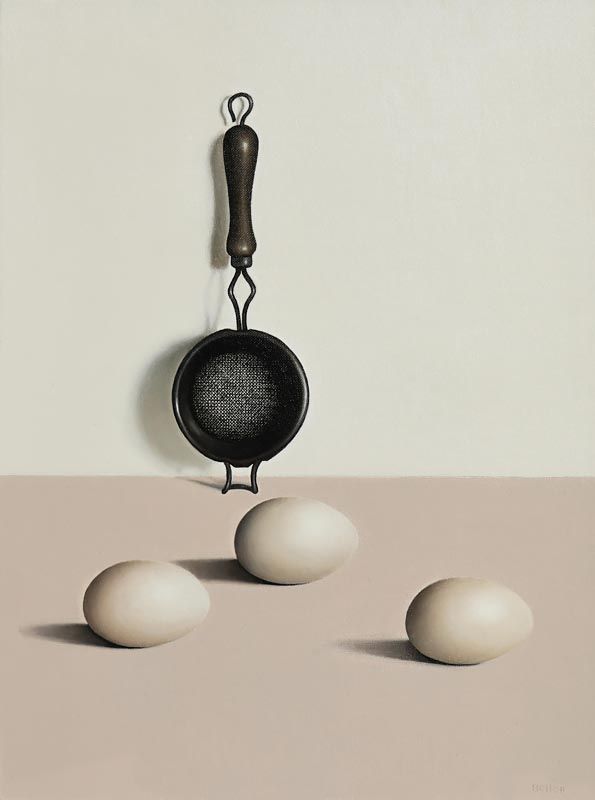
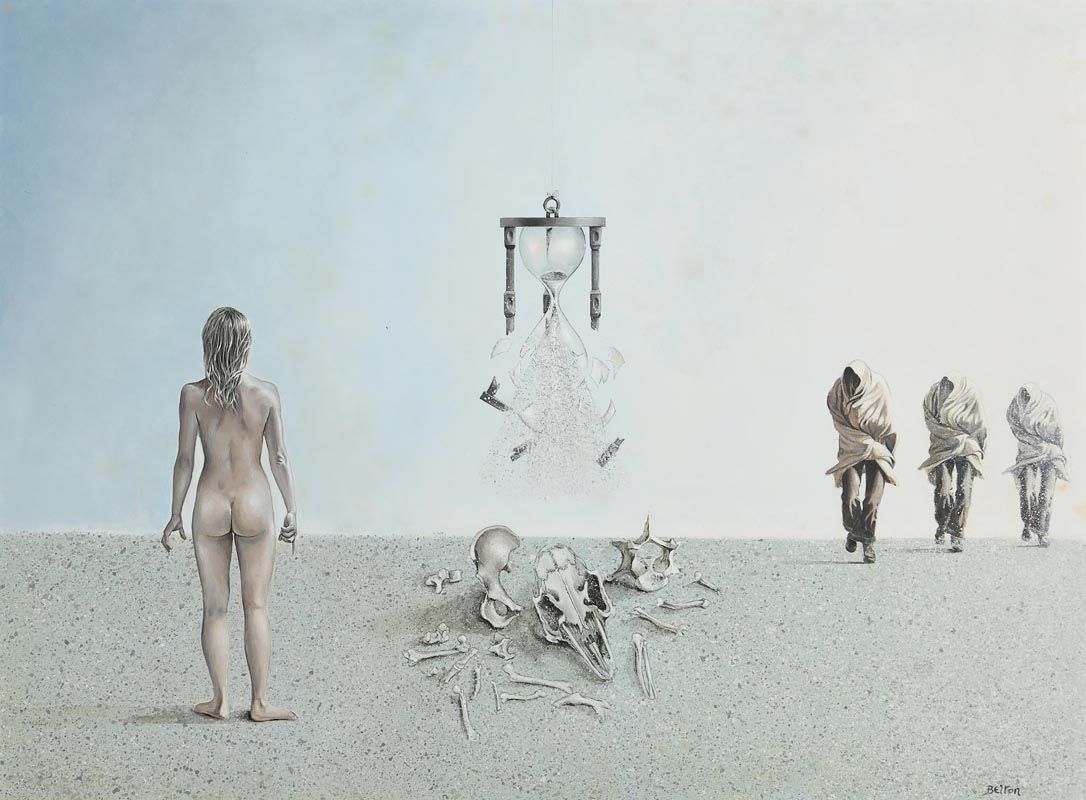
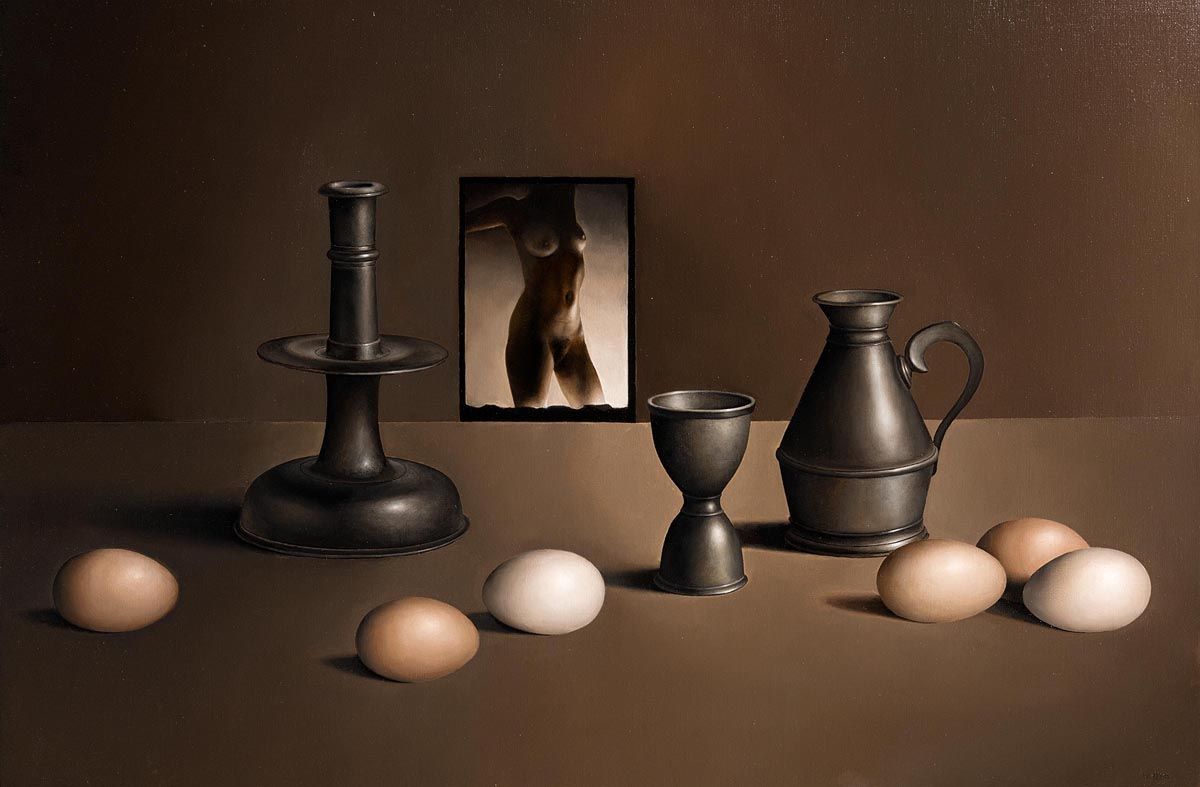
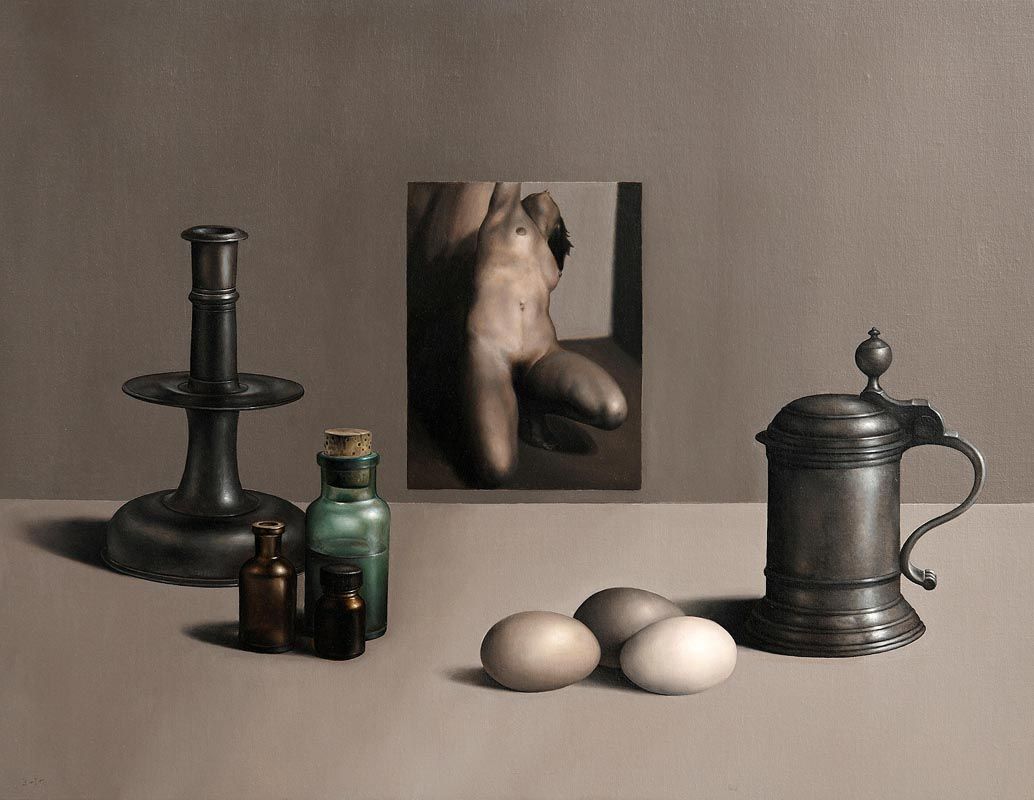

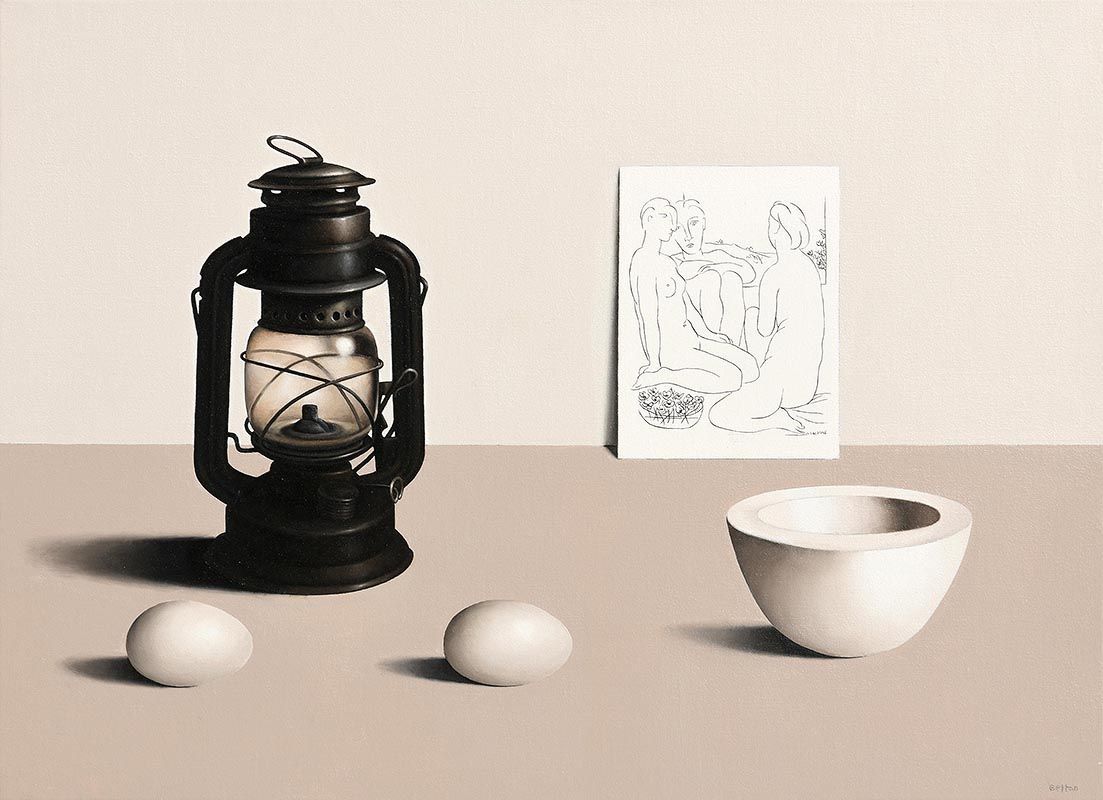
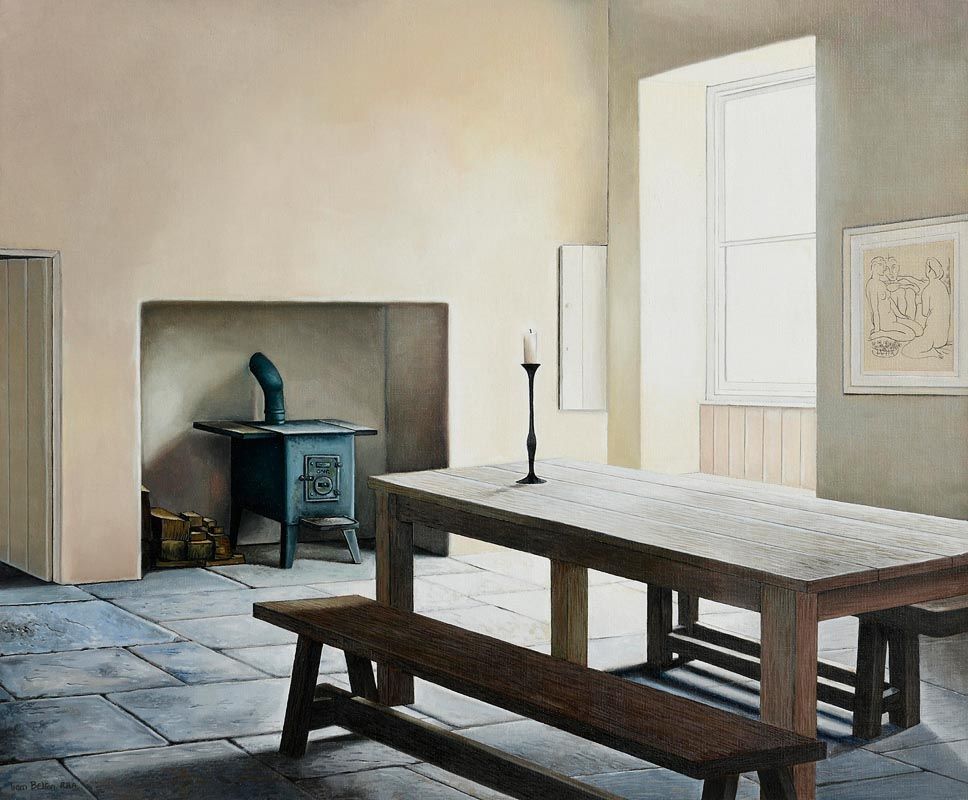

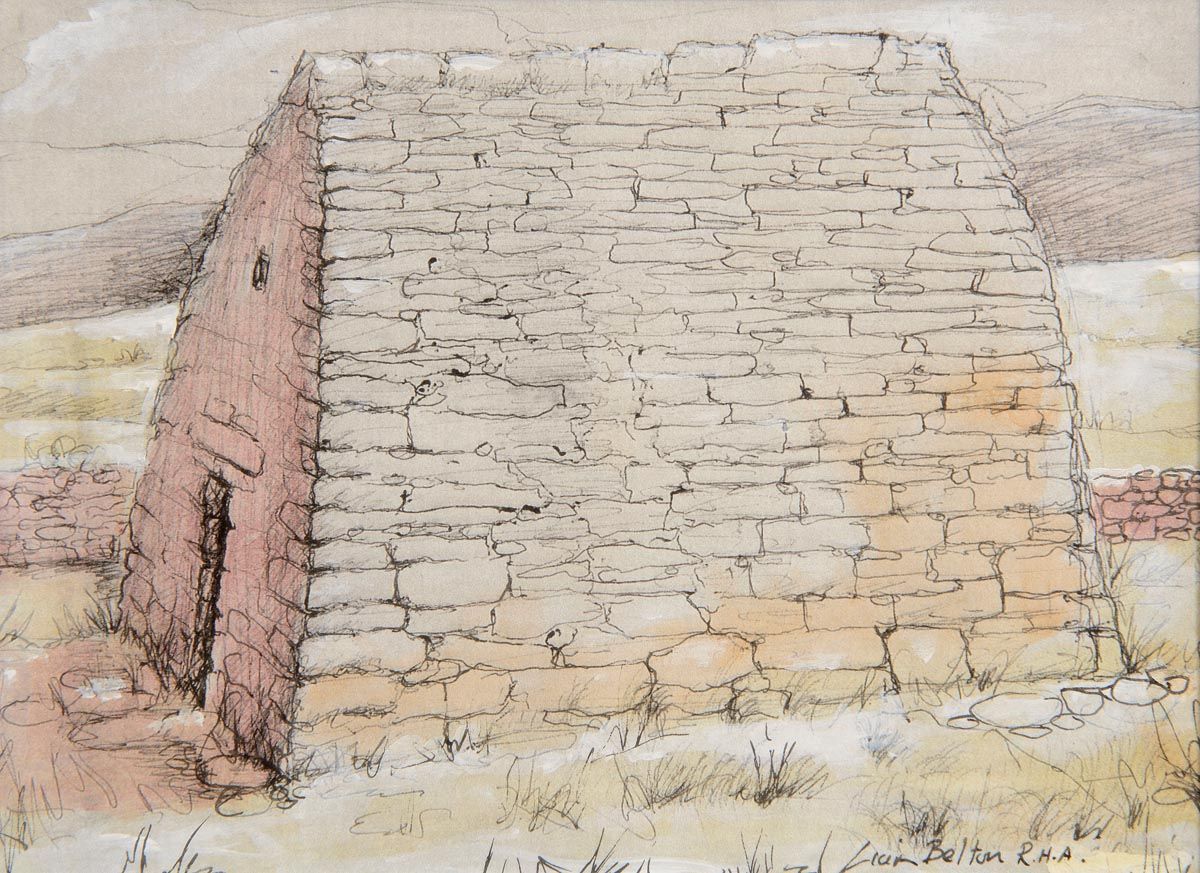
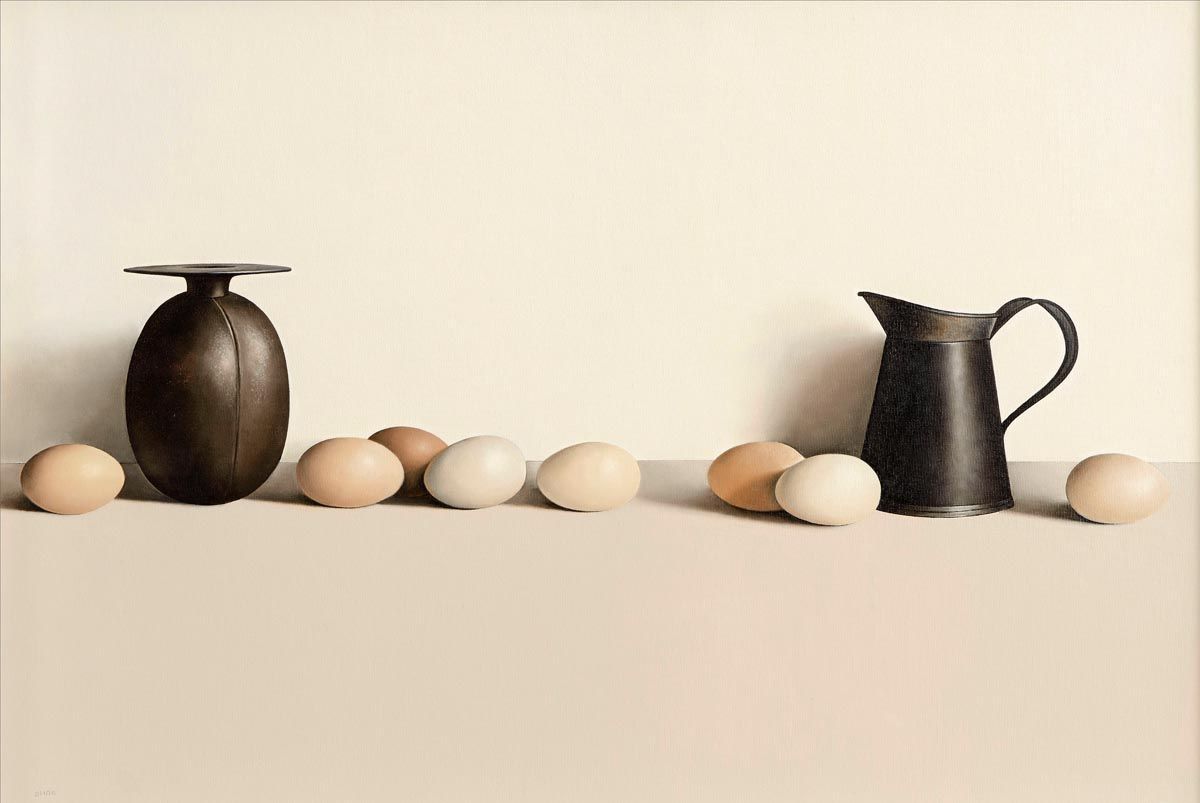
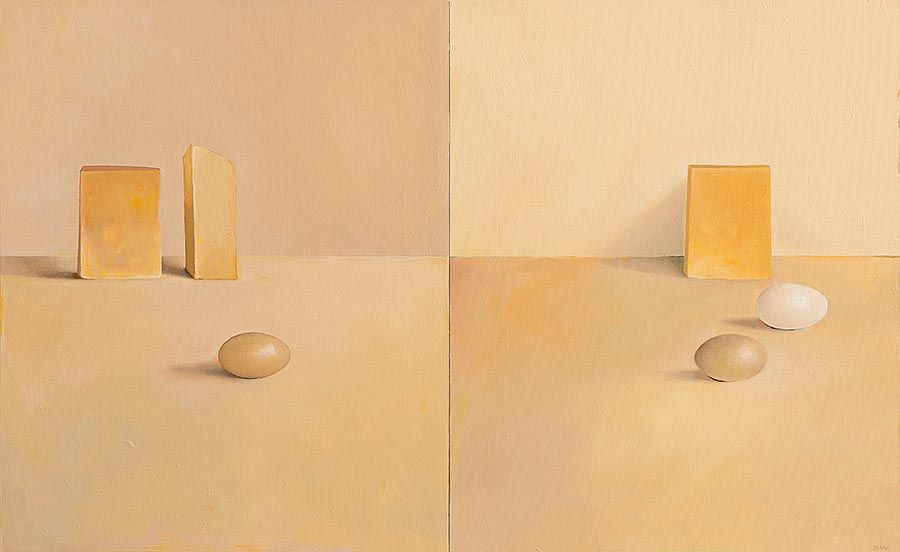
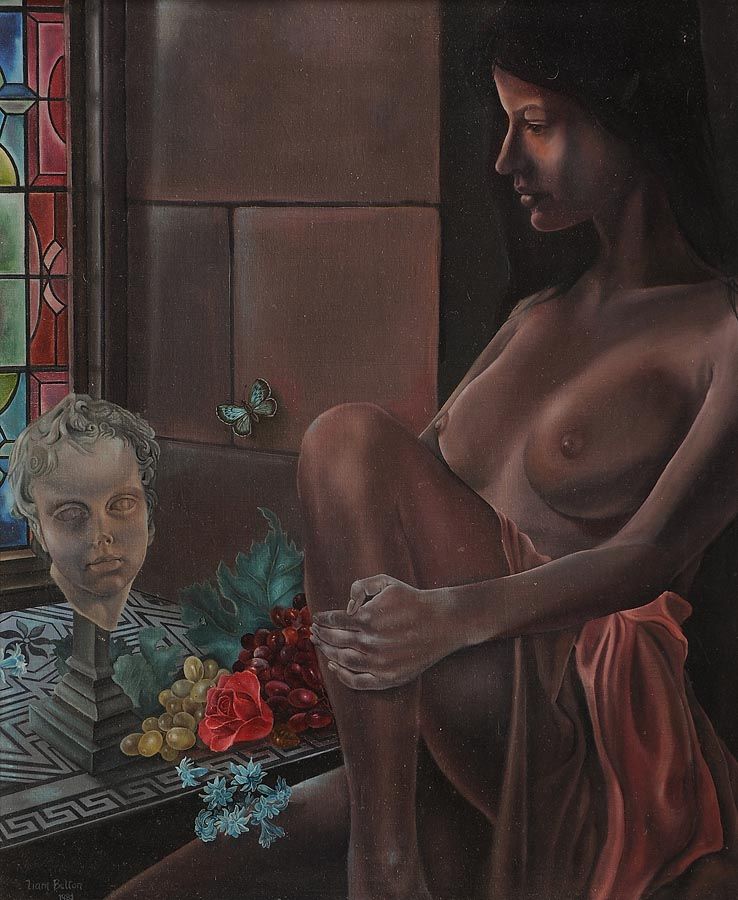
-lg.jpg)
-lg.jpg)
-lg.jpg)
Try LotSearch and its premium features for 7 days - without any costs!
Be notified automatically about new items in upcoming auctions.
Create an alert